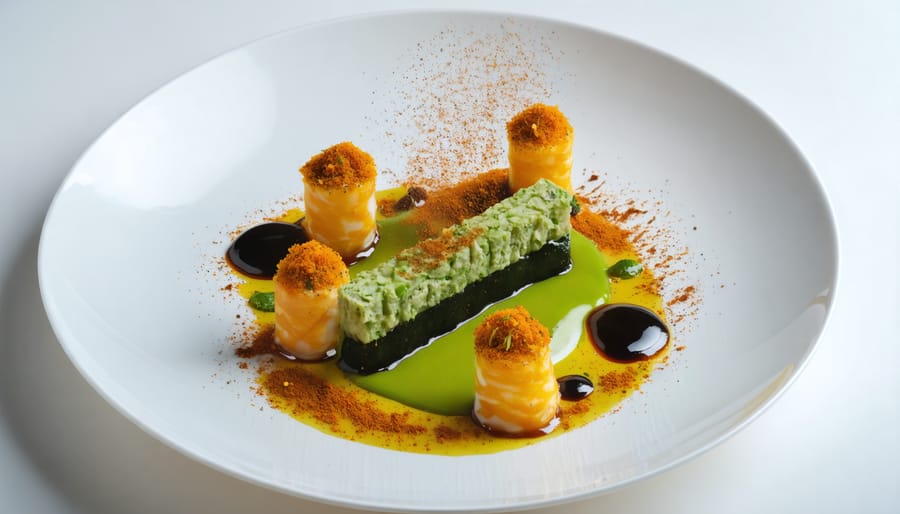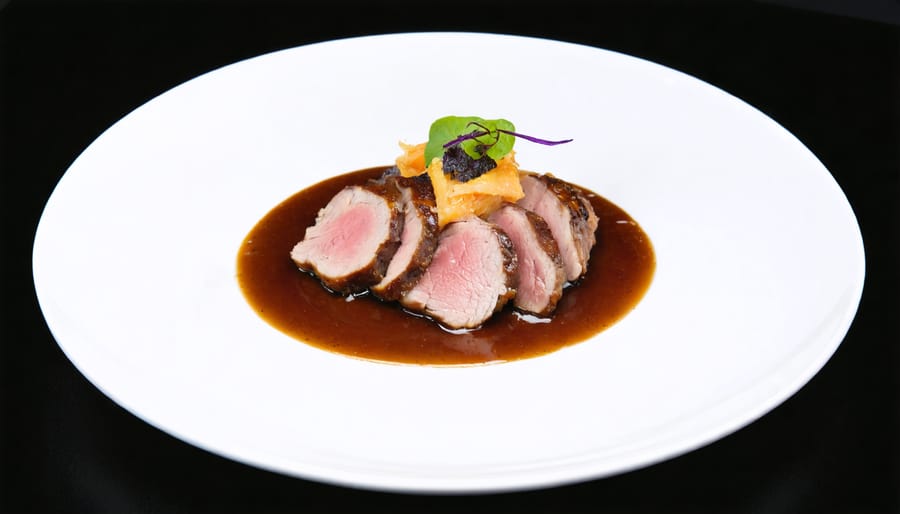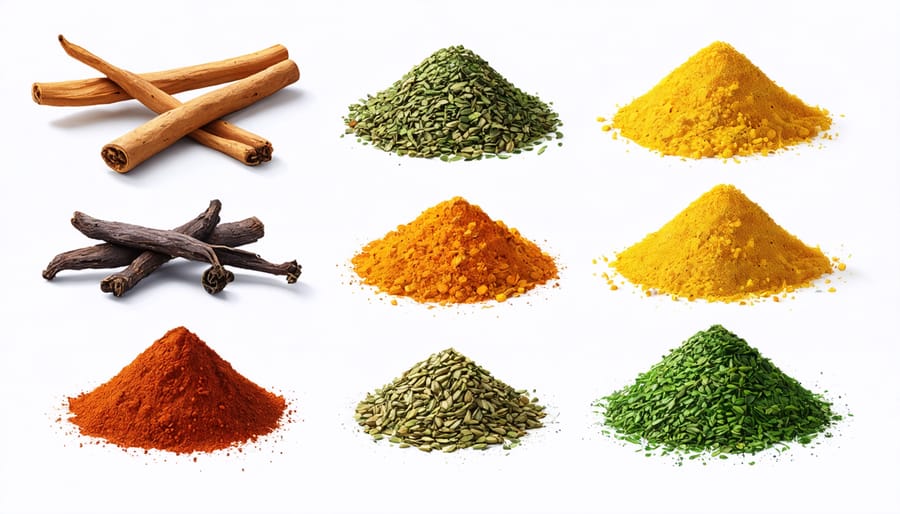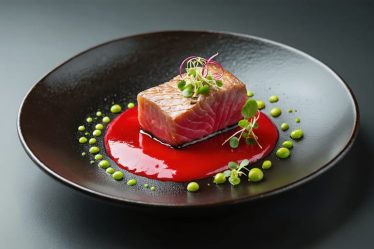
Step into a world where saffron-infused paellas dance with umami-rich ramen, and where slow-cooked curries share the spotlight with artisanal Mediterranean mezze. Global flavors aren’t just transforming our palates – they’re revolutionizing how we experience food in the 21st century.
In today’s interconnected culinary landscape, the boundaries between traditional cuisines are delightfully blurring. From food trucks serving Korean-Mexican fusion tacos to fine dining establishments expertly weaving Japanese techniques into French classics, we’re witnessing an unprecedented celebration of cross-cultural gastronomy.
This evolution isn’t just about combining ingredients from different corners of the world – it’s about understanding the stories, techniques, and cultural significance behind each dish. Modern chefs are diving deep into ancestral cooking methods while innovating with contemporary twists, creating experiences that honor tradition while embracing evolution.
As home cooks and food enthusiasts, we’re perfectly positioned to explore this exciting frontier. Whether you’re experimenting with exotic spice blends in your kitchen or seeking out authentic international restaurants in your neighborhood, you’re part of a global movement that’s making our culinary world richer, more diverse, and infinitely more flavorful.
Let’s embark on a journey through the vibrant tapestry of global flavors, where every bite tells a story and every meal is an opportunity for cultural connection.
The Rise of Global Fusion in Fine Dining
From Classic French to World Cuisine
Remember when French cuisine was synonymous with fine dining etiquette? Those days of strictly French menus and formal service have evolved into something far more exciting and diverse. I still recall my first experience at a modern fusion restaurant, where traditional French techniques married beautifully with Asian flavors – it was a revelation!
Today’s culinary landscape tells a different story. Celebrated chefs are breaking free from the classical French-only approach, embracing influences from every corner of the globe. Think miso-glazed duck breast, curry-spiced beef bourguignon, or wasabi-infused hollandaise sauce. These innovative combinations wouldn’t have been imaginable in traditional French kitchens just a few decades ago.
This shift reflects our increasingly connected world and changing palates. While French cooking techniques remain the foundation of professional kitchens, they now serve as a launching pad for creative exploration rather than strict rules to follow. From Thai-inspired tasting menus to Mexican-French fusion concepts, today’s fine dining celebrates diversity while honoring classical roots. It’s a delicious reminder that great food knows no boundaries.

Modern Chefs Breaking Culinary Boundaries
Today’s culinary innovators are rewriting the rules of fine dining by masterfully weaving global influences into their signature dishes. Take Dominique Crenn, whose San Francisco restaurant artfully blends French technique with Pacific flavors, creating dishes that tell stories of her travels and heritage. In London, Asma Khan has revolutionized Indian cuisine by highlighting regional specialties and age-old family recipes with a contemporary twist.
I recently had the pleasure of speaking with Chef Marcus Samuelsson, who shared how his Ethiopian roots and Swedish upbringing inspire his creative process. “Food is about bringing people together,” he explained, “and when we embrace different flavors, we embrace different cultures.”
Rising star Daniela Soto-Innes is breaking boundaries with her modern Mexican cuisine, proving that traditional flavors can shine in new, unexpected ways. Meanwhile, in Singapore, Jeanie Lim is garnering attention for her innovative fusion of Southeast Asian street food with classical European techniques.
These trailblazing chefs aren’t just cooking meals; they’re crafting experiences that challenge our perceptions and expand our culinary horizons, one innovative dish at a time.

Signature Global Ingredients Reshaping Menus
Asian Influences
The enchanting world of Asian flavors has revolutionized modern cuisine, bringing depth and complexity to dishes across the globe. From the umami-rich complexity of Japanese culinary traditions to the bold spices of Thai cooking, these ingredients have become essential elements in contemporary kitchens.
I remember the first time I experimented with miso paste in my kitchen – what started as curiosity led to a complete transformation of my cooking style. This fermented soybean paste adds an incredible depth to everything from salad dressings to marinades. Similarly, gochugaru (Korean red pepper flakes) has become my secret weapon for adding a subtle heat and beautiful color to dishes that goes well beyond traditional Korean recipes.
Other game-changing Asian ingredients include coconut aminos, a soy-free alternative that adds wonderful umami flavor to stir-fries and marinades. Yuzu kosho, a Japanese condiment made from yuzu citrus peel and chili peppers, brings brightness and heat to seafood dishes and simple vegetables. Even familiar ingredients like rice vinegar and sesame oil have found new life in fusion recipes, proving that Asian pantry staples can elevate any cuisine.
For those just starting to explore these flavors, try incorporating simple elements like furikake (a Japanese seasoning blend) on roasted vegetables or drizzling chili oil on your morning eggs. The versatility of these ingredients makes them perfect for both traditional and modern interpretations of beloved dishes.
Mediterranean and Middle Eastern Elements
The vibrant flavors of the Mediterranean and Middle East have become a cherished part of modern cuisine, bringing warmth and depth to dishes across the globe. I remember the first time I tried za’atar-crusted salmon – it was a revelation that completely changed my approach to seasoning fish! These regions offer an incredible palette of ingredients that elevate everyday cooking to something extraordinary.
Bright, citrusy sumac adds a tangy punch to salads and grilled meats, while aromatic dukkah – a blend of nuts, seeds, and spices – transforms simple avocado toast into a café-worthy breakfast. The magic of pomegranate molasses brings sweet-tart complexity to marinades and dressings, while preserved lemons add an intense burst of sunshine to tagines and grain bowls.
What’s particularly exciting is how these flavors are being reimagined in contemporary kitchens. Think harissa-spiced roasted vegetables, labneh-swirled brownies, and tahini drizzled over everything from ice cream to roasted root vegetables. Even traditional favorites like hummus and baba ganoush are getting creative twists with additions like roasted butternut squash or black garlic.
The beauty of these ingredients lies in their versatility – they can be both bold statement makers and subtle background notes. Whether you’re sprinkling za’atar on your morning eggs or adding a touch of rose water to your weekend baking projects, these Mediterranean and Middle Eastern elements have become essential tools in the modern cook’s arsenal.
Techniques That Travel
Traditional Methods in Modern Settings
There’s something magical about watching a chef slow-roast meat in an earthen tandoor or witnessing the artful preparation of hand-pulled noodles. These time-honored cooking methods, passed down through generations, are experiencing a remarkable renaissance in today’s most innovative kitchens.
I recently visited a modern bistro where the chef proudly showcased her grandmother’s clay pot cooking technique, reimagined with locally sourced ingredients. The resulting dish – a fusion of ancient wisdom and contemporary creativity – reminded me that some cooking methods truly are timeless.
Traditional cooking techniques bring more than just authenticity to modern kitchens; they often offer sustainability benefits that resonate with today’s environmentally conscious diners. Take fermentation, for instance. This ancient preservation method has found new life in trendy restaurants, where chefs are creating everything from kombucha cocktails to kimchi-inspired condiments.
Wood-fire cooking, one of humanity’s oldest cooking methods, is making a dramatic comeback in upscale restaurants. The subtle smoky notes and perfect char it creates simply can’t be replicated by modern equipment. Many chefs are discovering that these traditional methods not only enhance flavor but also create memorable dining experiences that tell a story.
What’s particularly exciting is how these ancient techniques are being adapted for modern settings. Traditional Mexican molcajetes (stone mortars) are being used alongside high-tech blenders, while age-old smoking techniques are finding new applications in molecular gastronomy. This beautiful marriage of old and new is creating dishes that honor cultural heritage while pushing culinary boundaries.
For home cooks looking to explore these methods, start small. Try using a mortar and pestle instead of a food processor for your next curry paste, or experiment with natural fermentation. You might be surprised how these traditional techniques can transform your cooking, one dish at a time.

The Diner’s Perspective
The Instagram Effect
Remember when food was just, well, food? Those days are long gone, thanks to the Instagram revolution! I’ve watched countless dishes go from local favorites to global sensations, all because of a perfectly-timed post. From vibrant Korean corn dogs to rainbow-colored Vietnamese drinks, social media has transformed how we discover and crave international flavors.
The rise of food photography trends has restaurants worldwide reimagining their presentations to be more “Instagram-worthy.” That purple ube ice cream you’ve been seeing everywhere? It’s not just about the taste – it’s about the likes and shares too!
What I find fascinating is how this visual feast has created a more adventurous dining public. People are now more willing to try unfamiliar dishes simply because they’ve seen them looking gorgeous in their social media feeds. Restaurant owners tell me they’ve noticed customers specifically requesting dishes they’ve spotted on Instagram, often using screenshots as reference.
This digital word-of-mouth has also given smaller, authentic ethnic restaurants a platform to shine. A single viral post of their signature dish can transform a family-owned eatery into a destination spot overnight. It’s democratized food discovery in the most delicious way possible!
Travel-Inspired Palates
Remember that summer you first tasted authentic pad thai in Bangkok, or the moment you discovered real Italian gelato in Florence? These culinary travel experiences do more than just create beautiful memories – they fundamentally transform our palates and dining preferences.
Today’s food-savvy travelers return home with evolved tastes and heightened expectations. That street food adventure in Mexico City might have you seeking out restaurants that make their tortillas by hand, while that cooking class in Provence could inspire you to appreciate the subtle complexity of herbs in your dishes.
This shift in dining preferences isn’t just about authenticity – it’s about understanding the context and culture behind each dish. When you’ve witnessed the early morning buzz of a Tokyo fish market or shared a family meal in Marrakech, you develop a deeper appreciation for the stories behind the flavors.
Social media has amplified this effect, with food-focused travelers sharing their discoveries and inspiring others to explore global cuisines. Restaurant owners notice this trend, adapting their menus to cater to these more sophisticated palates. The result? A beautiful cycle where travel experiences enhance our appreciation for diverse flavors, and our enhanced appreciation encourages more culinary exploration.
Future Flavor Trends
As someone who loves exploring food trends, I’m incredibly excited about what’s on the horizon for global flavors. Just last week, I attended a food innovation conference where chefs and culinary experts shared their predictions for the next wave of taste sensations that will grace our plates.
West African cuisine is poised to take center stage, with ingredients like suya spice blends and grain of paradise making their way into fusion dishes. I’ve already spotted innovative chefs incorporating these bold flavors into everything from craft cocktails to upscale street food concepts.
The rise of climate-conscious dining is driving interest in indigenous ingredients and ancient preservation techniques. Expect to see more fermented foods from various cultures, like Korean gochujang and Japanese koji, being used in unexpected ways. These aren’t just trendy additions – they’re part of a larger movement toward sustainable and health-conscious eating.
Another exciting development is the emergence of “heritage fusion” – where chefs are combining their cultural backgrounds with classical training to create entirely new flavor profiles. Imagine Filipino adobo seasoning in French cuisine or Indian masala in Italian dishes. It’s about honoring traditions while pushing culinary boundaries.
Southeast Asian herbs and spices are gaining momentum too. Lesser-known ingredients like pandan, galangal, and makrut lime leaves are becoming more accessible and appearing in modern interpretations of classic dishes. I recently tried a pandan-infused crème brûlée that completely transformed this French dessert.
Technology is also influencing flavor trends, with AI-assisted flavor pairing suggesting unprecedented combinations. This scientific approach to cuisine is helping chefs discover exciting new flavor profiles that might never have been considered before.
The future of global flavors isn’t just about individual ingredients – it’s about creating meaningful connections through food, celebrating diversity, and reimagining what’s possible in the kitchen. As these trends evolve, they’re making the culinary world more inclusive and exciting than ever before.
The fusion of global flavors has transformed modern gourmet dining into an exciting journey of cultural discovery. What started as a curious exploration has blossomed into a movement that celebrates diversity on the plate, creating unforgettable dining experiences that challenge and delight our palates. As a food enthusiast who’s witnessed this evolution firsthand, I’m thrilled to see how chefs are increasingly embracing ingredients and techniques from around the world, creating innovative dishes that tell stories of heritage and connection.
Looking ahead, this trend shows no signs of slowing down. If anything, we’re seeing even more creative interpretations of traditional cuisines, with sustainability and local sourcing adding new dimensions to global cooking. The future of gourmet dining promises to be more inclusive, experimental, and exciting than ever before, as chefs continue to push boundaries and diners become more adventurous in their culinary choices. This beautiful marriage of global flavors and fine dining isn’t just changing how we eat – it’s changing how we understand and appreciate food culture worldwide.



